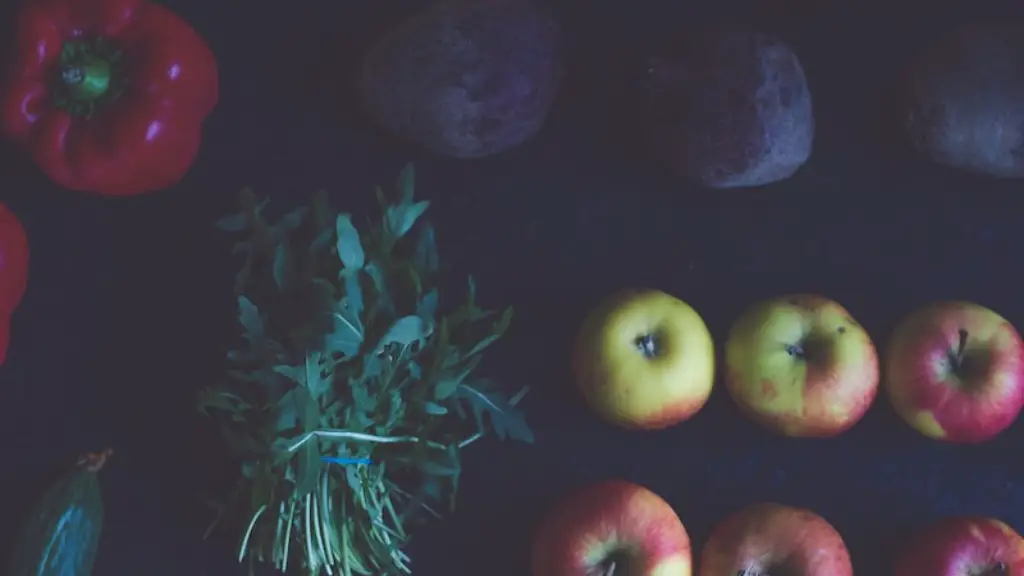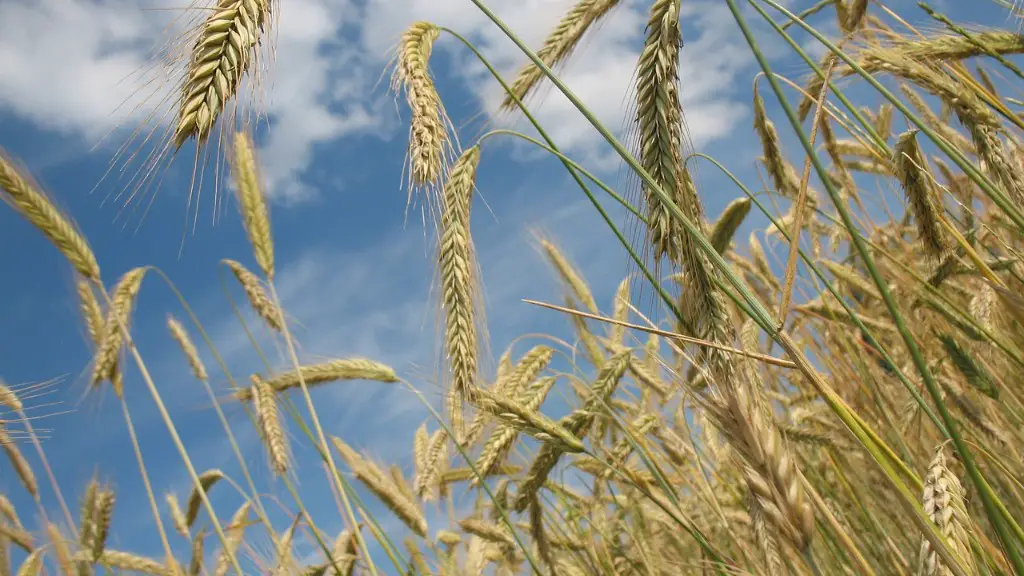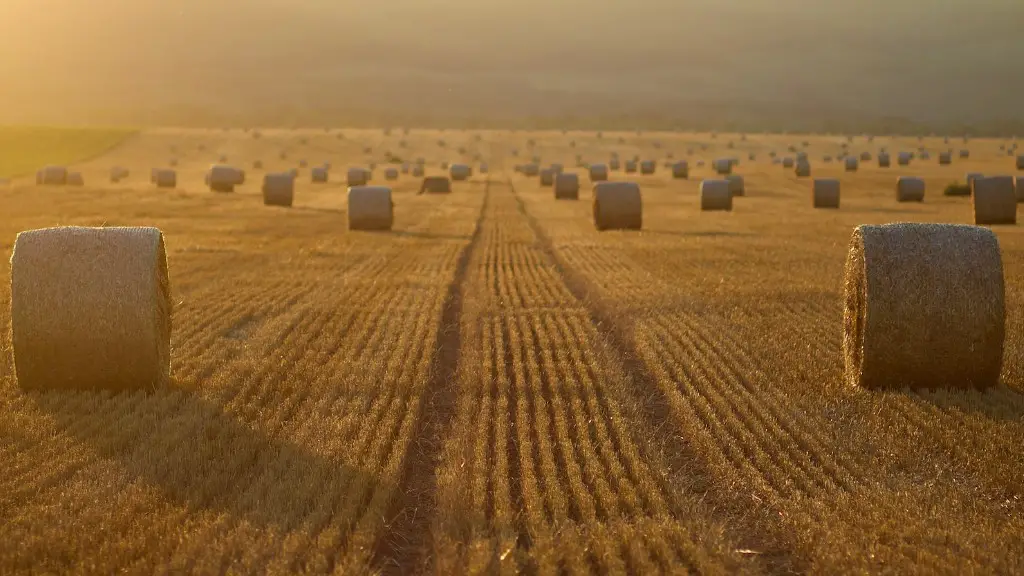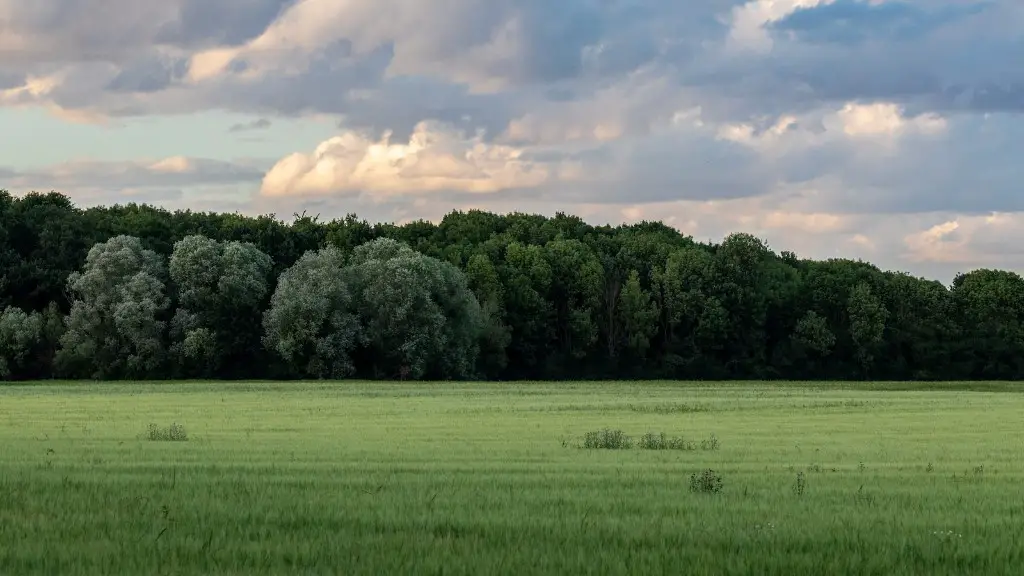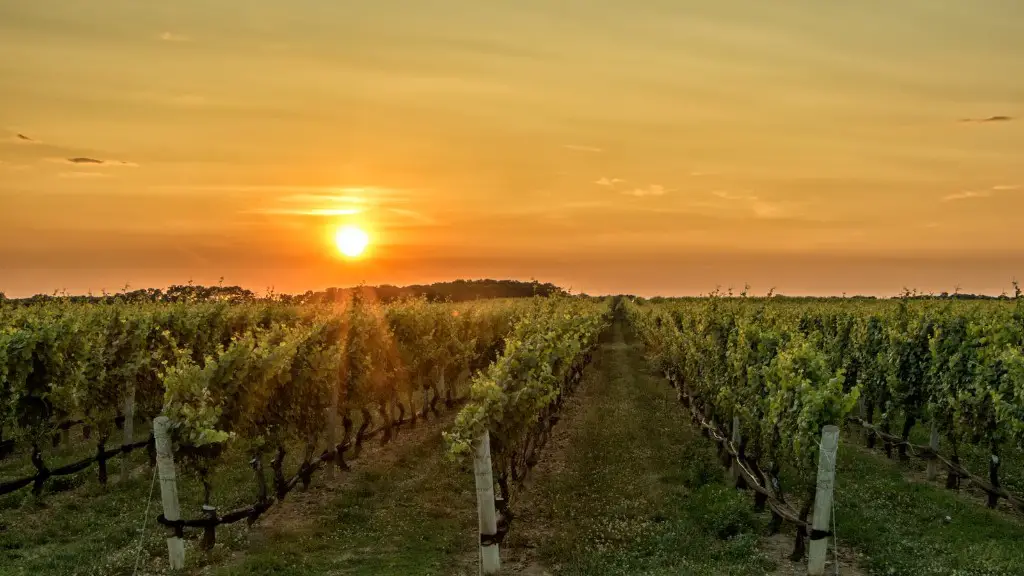Regenerative agriculture is a system of farming principles and practices that seeks to regenerate and revitalize degraded soils. Soil health is key to regenerative agriculture, as healthy soils are more productive and resilient to pests and diseases. Regenerative agriculture also embraces crop rotation, cover Cropping, and other techniques to promote soil health.
According to estimations, regenerative agriculture has the potential to sequester 1-2 gigatons (1 billion-2 billion metric tons) of carbon dioxide per year – more than what is emitted by the global transportation sector. When compared to traditional farming practices, regenerative agriculture could potentially offset a significant amount of anthropogenic (human-caused) greenhouse gas emissions.
Regenerative agriculture has the potential to sequester up to 2.5 gigatons of carbon dioxide per year, which is about 15 percent of the world’s annual emissions.
How much carbon can regenerative agriculture sequester per acre?
Regenerative grazing practices can help to sequester carbon in the soil, which can help to offset greenhouse gas emissions. Grazing lands make up a significant portion of the world’s land surface, so if these practices were widely adopted, they could have a significant impact on climate change.
While there is no one silver bullet for combatting climate change, regenerative grazing practices offer an important tool for sequestering carbon. By restoring grasslands and promoting healthy soil ecosystems, these practices can help to draw down atmospheric carbon and store it in the ground. In addition to their climate benefits, regenerative grazing practices can also improve water quality, support wildlife, and create more resilient landscapes.
How much carbon does agriculture sequester
It is well known that trees and other plants take in carbon dioxide from the atmosphere and release oxygen back into it. But what is often overlooked is that the soil itself is also a key player in the global carbon cycle. In fact, soils are estimated to contain more carbon than all the world’s plants combined.
Now, scientists are finding that agricultural soils could be a key tool in mitigating climate change. By adopting practices that improve the health of soils, farmers could help sequester carbon in the ground, offsetting emissions from other sources.
There are a number of ways to do this, but some of the most promising include:
• Minimizing tillage: Conventional farming involves tilling the soil regularly, which can disrupt the delicate balance of microbes and other organisms that help keep carbon locked in place. No-till or low-till methods can help reduce emissions while still maintaining yields.
• Planting cover crops: Cover crops are plants that are grown between cash crops (like corn or soybeans) to improve the health of the soil. They help add organic matter, reduce erosion, and promote better drainage. All of these benefits can lead to increased carbon sequestration.
• Using compost: Comp
Conservation tillage is a great way to reduce soil erosion and improve soil quality. It leaves crop residue on the ground to cover the soil, which protects it from wind and water erosion. Over time, this can build up the soil’s organic matter, improve its structure and increase its fertility. Conservation tillage can also help to sequester carbon in the soil, which can help to mitigate climate change.
Is regenerative farming carbon negative?
Regenerative farming goes further than organic, aiming to be carbon neutral. Agriculture contributes to a third of the world’s greenhouse gas emissions, and regenerative farming practices can help to sequester carbon in the soil. By adopting these practices, farmers can help to mitigate the effects of climate change.
The disadvantages of regenerative agriculture are that farmers will need to acquire new knowledge and skills, less tilling may lead to more unwelcome plants, and some farmers compensate by increasing their use of herbicides.
What is the most efficient way to sequester carbon?
Forests and woodlands are considered one of the best forms of natural carbon sequestration because CO2 binds to plants during photosynthesis, exchanging it for oxygen as a purifying emission. This process helps to offset the greenhouse gases that contribute to climate change, making these ecosystems an important part of the fight against global warming.
Alfalfa and canola are two of the best crops to plant if you’re looking to sequester maximum levels of carbon in your soil. This is according to Brian McConkey, a researcher from Agriculture Canada. These crops are particularly good at absorbing carbon dioxide from the atmosphere and storing it in their roots. This helps to improve soil health and fertility, and can also help to mitigate climate change.
Which ecosystem is the most efficient in sequestering carbon
Forests play a critical role in mitigating climate change by sequestering carbon. Among terrestrial ecosystems, forests have the highest carbon sequestration rates, reaching up to three times that of wetlands and agroecosystems. This helps to offset the carbon emissions from human activities, making forests an important part of the global effort to combat climate change.
This is a great way to help offset your carbon footprint and make a difference for the environment!
How much CO2 do we need to sequester?
If we want to reach net-zero emissions by 2050, we’ll need to do a lot more than just reducing our reliance on fossil fuels. We’ll need to start actively removing carbon dioxide from the atmosphere on a large scale.
Orcas, also known as killer whales, are one of the most efficient predators in the world. They’re also one of the few animals that can survive in both cold polar waters and warm tropical waters. This makes them uniquely suited to help us remove carbon dioxide from the ocean.
While there are other ways to remove carbon dioxide from the atmosphere, such as planting trees, usingOrcas to help us reach net-zero emissions by 2050 would be a more efficient way to use our resources.
It is estimated that soils store more carbon than is contained in all plant biomass. This means that soils play a critical role in regulating the global climate. However, soils are often undervalued and overlooked, especially when compared to forests and grasslands.
When considering the impact of human activity on the climate, it is important to remember that soils are a key part of the equation. Jackson urges us to pay more attention to soils, in order to better understand and predict the fate of our planet’s forests and grasslands.
How many trees does it take to sequester a ton of carbon
In high rainfall zones with good soil, it may take as many as 15 trees over 25 years to sequester 1 tonne of CO2e. In lower rainfall zones with poorer soil, it could take as many as 30 trees!
It is estimated that grasses can accumulate and deposit carbon into the soil by approximately one-half ton of carbon per acre year for 30 to 40 years. Net carbon sequestration rates in urban lawns have been estimated at between 200 and 1,800 lbs of carbon per acre per year.
How much carbon can a single tree sequester?
A mature tree will absorb more than 48 pounds of carbon dioxide from the atmosphere and release oxygen in exchange.
The biggest issue with rotational (‘holistic’) grazing is the large amount of land that is required to grow the feed for the animals. This can lead to overuse of antibiotics for fattening operations, as well as poor manure management which can lead to air and water pollution. In addition, rotational grazing results in 50% of total agricultural greenhouse gas emissions.
How much carbon does rotational grazing sequester
If all of Alberta’s grasslands were rotational grazed, 12 million tonnes of carbon could be sequestered every year.
That’s the finding of a new University of Alberta study, which found that grasslands make great carbon sinks when grazed properly.
“We found that when you graze properly, you can actually store a lot of carbon in the soil,” said lead author Phil Hylands.
The study, published in the journal Science, found that rotational grazing can help to sequester carbon in the soil, which can then be used to offset greenhouse gas emissions.
Hylands and his team studied two different grazing systems on a grassland in Alberta. One was a continuous grazing system, where cattle were allowed to graze freely on the grassland. The other was a rotational grazing system, where cattle were rotated through different sections of the grassland.
The team found that the rotational grazing system led to a significantly higher amount of carbon being sequestered in the soil.
“In the rotational system, we found that there was about double the amount of carbon being sequestered in the soil,” said Hylands.
The study provides new insight into the potential of grasslands to store carbon
Regenerative agriculture is a type of farming that focuses on rebuilding the soil by using techniques that work with nature, rather than against it. These techniques include things like cover crops, crop rotation, and no-tillage.
Regenerative agriculture has many benefits, one of which is reducing greenhouse gas emissions. Food production is a significant contributor to global greenhouse gas emissions, accounting for around 26%. Regenerative farming can help to reduce these emissions by introducing techniques that are gentler on the environment.
Conclusion
It is difficult to estimate how much carbon regenerative agriculture can sequester because it varies depending on the practices used, the soil type, climate, and other factors. However, some studies suggest that regenerative agriculture practices could sequester 2-20% of global anthropogenic emissions.
Regenerative agriculture has the potential to sequester large amounts of carbon. However, there is still much research to be done in order to determine exactly how much carbon can be sequestered by regenerative agriculture practices.
